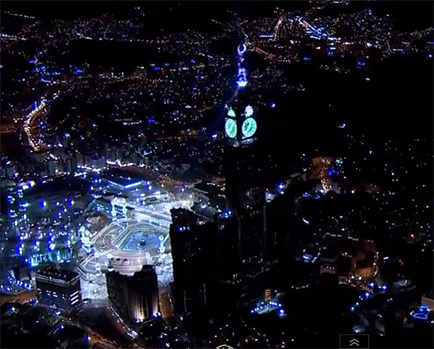
The sacred sites of Mecca have a long and rich history in Islamic tradition. One of the most important aspects is the well of Zamzam located close to the ka‘ba in the Meccan shrine. According to tradition this well flowed out miraculously when Ibrahim’s son Ismail was thirsty and scraped his feet on the ground. The well was later rediscovered by the Prophet Muhammad’s grandfather, Abd al-Mutallib. For centuries the well of Zamzam has provided the water for Muslim pilgrims to the site. Regardless of what one thinks about legendary attribution, Zamzam water has been a great marketing tool over the years. On Amazon you can even buy water allegedly bottled at the well in Saudi Arabia, only a mere $15 for 500 ml. In Germany you can buy the same amount for only 3.5 Euros, even though it appears that Saudi Arabia bans the export of Zamzam water.
Then there is the Burj Zamzam Clock, a virtual ibn Big Ben towering over the ka‘ba and shielding a shopping mall and luxurious hotel. Such selling of holy sites has a long history as virtually every inch of Palestine can be linked to some biblical event. But by turning a sacred site into a tourist attraction, does not Zamzam become the victim of flim flam?